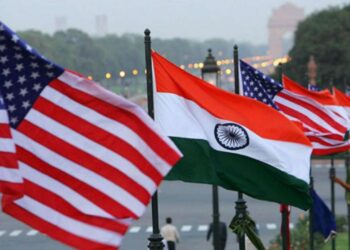The Indian overseas student along with 5 passengers aged between 14-26 crashed the car into a concrete wall in Adelaide’s southern suburb. On September 13, last year, Singh entered a guilty plea to four charges of causing severe hurt by driving recklessly and one count of causing harm by driving recklessly.
Singh reportedly thought he was the least intoxicated person to drive after the group had been drinking and listening to music before deciding to travel somewhere else, according to testimony in South Australia’s District Court.
According to sentencing judge Paul Muscat, “Each count is an aggravated offence because you were driving whilst there was present in your blood a concentration of 0.08 g or more of alcohol and, further, that you were travelling in excess of 45 km/h over the applicable speed limit.”
Judge Paul Muscat stated, “Your dangerous driving is objectively very serious. You were drunk and travelling at extremely high speeds. You knew there were too many passengers in the vehicle, and you should never have permitted that to occur.”
When used for purposes other than business, a taxi is considered a private vehicle. As a cab driver, the defendant would have known it was against the law to transport people in a vehicle, according to Judge Muscat. The court said, “It is incredible that none of the passengers was injured more seriously than they were, or worse, killed.”
The District Court of South Australia heard testimony that Mr. Singh was not operating in the capacity of a taxi driver on the night of the collision and that all of the passengers—including the driver—had been drinking and hanging out with friends at the same location.
According to testimony given in court, he was driving so quickly that his passengers were yelling at him to slow down, but he answered by stating, “It’s alright. I know how to drive.”
One of the passengers’ victim impact statements, in which she discussed the crash’s continuing effects, was recounted by Judge Muscat. He said, “She has endured terrible nightmares of the collision. She cannot forget the screaming, the screeching sound of the tyres and the slamming of the vehicle into the wall.”
The court was informed that a senior police investigator had watched the crash tape and determined that, five seconds before the collision, the driver was travelling at 148 km/h in a 60 km/h zone and had turned the bend at a speed of over 100 km/h.
The police allegedly urged Singh to do a valid alcohol breath test at the scene of the collision, and Singh subsequently registered a blood alcohol level of 0.107 at a hospital. His alcohol level at the time of the accident, two hours prior, was predicted to be 0.139.
Singh, who travelled to Australia in March 2019 on a student visa to pursue tertiary education, was born in India and had been working as a cab driver to pay for his studies. Mr. Singh, an only kid who was born in India, drove taxis while earning money for his education.
According to Judge Muscat, Mr. Singh’s father has experienced long-term physical and mental health problems. The court said, “Your absence from your parents in this time of need has not only impacted them but also caused you distress. You feel ashamed of all of your parents’ hard work to see you better your life will come to nothing.”
The judge added, “Your dream of a life living and working in Australia is now over as your visa will be cancelled, and you will be deported to India upon your release from prison.”
Mr. Muscat stated that Mr. Singh’s young age, early admission of guilt, and exhibit of deep regret had resulted in a maximum decrease in the sentence. He received a five-year prison term with a two-and-a-half-year non-parole period. After serving his time, Singh will be sent back to India. In addition, the court has mandated a 14-year driving ban for him.
Professor White, a forensic pharmacologist, said in his report on the case that surveys have unequivocally shown that drivers with blood alcohol levels in the range Mr. Singh had that evening are 82 times more likely to be in an accident.
The judge declared that “general deterrence,” or discouraging other drivers, notably young drivers, from participating in risky driving behaviours, particularly when inebriated, is also a highly relevant sentencing factor in situations of this nature.











